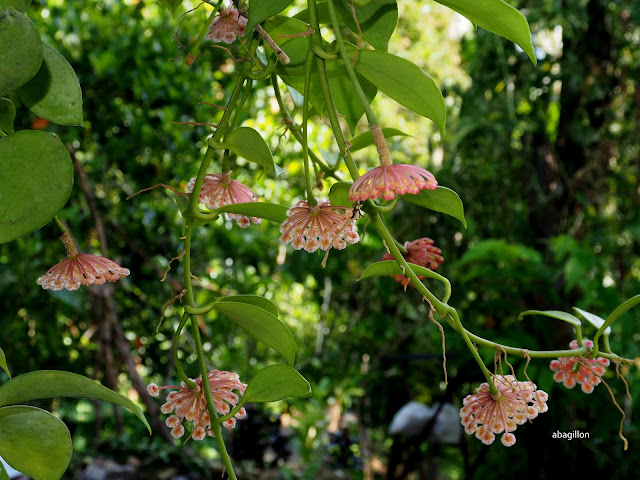Hoya obscura is one of the about 200 species of hoyas endemic or native to the Philippines. The first documented collections were from Bulusan, Sorsogon, but later found in many areas in the country. Being endemic to the country however, does not mean it is still fully available in the wild. It is now mostly found in private nurseries locally and in specialized gardens and collectors in other countries. It was just noticed and sought after here by hobbyists in the last few years, which could also have aggravated its demise in the natural habitat.
The plant is medium size, more compact than other hoyas and grows favorably downwards in hanging baskets. Leaves are mostly green to light green with conspicuous veins. It belongs to the hoyas with milky sap. The flowers are drooping downwards with flat umbel, and the corolla is hairy revolute. The leaves sometimes turn pinkish when exposed to colder weather in a sunny environment.
It is friendly to a hoya beginner, as it is easy to grow, and responds favorably to normal caring. But just like most of the hoyas it doesn't need wet roots all the time. Drying between watering is a requirement, in a media that is well drained.
The flowers in the above photo can make the vicinity radius of 5 meters to be sweetly smelling of citrusy cinnamon buttered bread. My hoya garden is just 1 meter away from the terrace, and drinking coffee and toast in the morning feels more luxurious when the flowers are in bloom. I haven't heard someone not liking the scent of Hoya obscura.
The flowers are normally visited by ants, which partake their share of nectar or whatever satisfies them there. Other insects are also seen lingering in this hoya plant. Those peduncles bearing the flowers must not be cut, as the flowers always emerged at the tips. Flowering is continuous when the plant is growing very well.
The 3 umbels above represents 3 stages of maturity, with the buds clearly seen. The other 2 umbels not in focus are fully blooming with the yellowish one being the older.
Unopen buds show dark pink around each flower, together with the pedicels. Even at the unopen stage the flowers are already beautiful.
Above photo shows the typical size and color of the fully opened flowers. The corolla are still pinkish with the corona always yellow. Color hues of the corolla are also governed by many factors of the environment including sunlight, temperature, pH of the media.
Above is a representative of the already advanced bloom. They become more yellow or lighter yellow as they approach dehiscence.
They turn full yellow in 3 days when the flowers are ready to drop.
a black ant lingers on the flowers








